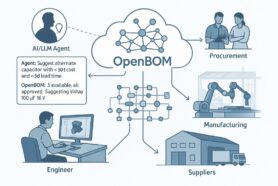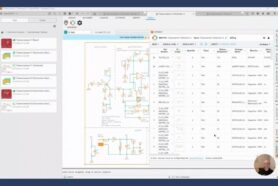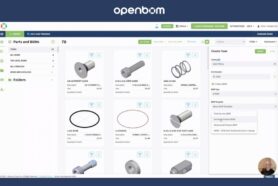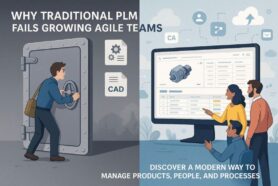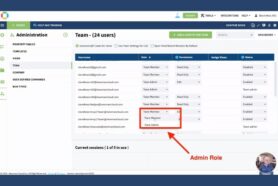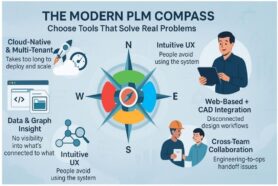
Recently, someone approached me with a seemingly simple yet profoundly complex question: “Is OpenBOM a PLM?” Over my 20+ years working in the PLM industry, I’ve encountered and even provided countless definitions of PLM, each nuanced and context-dependent. So, my response to this prospect was straightforward: “I don’t know what you mean by ‘PLM.’ Instead, let me tell you about the problems OpenBOM solves.”
The conversation that followed my approach was interesting because it shifted the discussion from answering the question “what software” to the conversation about “what problem” it solves.
This exchange sparked deeper thoughts about how each PLM software is trying to find a unique name and way for what they do, the important thing is not how to call the software (Hardware Change Management, Hardware Engineering, Product Value Management, Innovation Platform, etc), but what problems it solves.
In my article today, I want to elaborate on the problems OpenBOM solves and how we do so.
Why People Don’t Want More Software?
People don’t want software; they seek solutions to their problems. Nobody wakes up thinking, “I need to buy software today.” Instead, they wake up with a problem and wonder how to solve it. The focus is on outcomes, not tools. Therefore, it’s crucial for companies to emphasize the real-world problems their solutions address rather than the software itself.
Is OpenBOM PLM?
Returning to the question of whether OpenBOM is PLM, I prefer to pivot to the problems OpenBOM solves for its customers. The label of the software is less important than its functionality and impact. So, let’s explore three key aspects: (1) who can use OpenBOM; (2) what problems it solves; and (3) what outcomes it delivers.
Who Uses OpenBOM?
Let’s speak about three groups of OpenBOM customers and the reason these groups started to use OpenBOM.
Engineering Teams: Streamline the design and development process.
- Challenges: Engineering teams often face issues with version control, collaboration, and data consistency. Different team members may use various tools (MCAD, ECAD, etc.) and organizing and coordinating different elements of the product and their revisions is complex and inefficient.
- Solution: OpenBOM offers a unified platform connected to engineering tools (CAD, etc.) where engineering data can be centralized, ensuring all team members have access to the latest information and can collaborate in real-time.
Small and Medium-Sized Manufacturing Companies: Enhance efficiency, streamline processes and collaboration.
- Challenges: Smaller manufacturers might struggle with limited resources and the complexity of managing product data manually or using emails and spreadsheets. They are looking for how to solve the problems of organizing information about complex products efficiently, ordering off the shelf and custom parts, and supply chain management.
- Solution: OpenBOM provides these companies with powerful yet affordable tools to manage their product data, streamlining operations and improving productivity without needing extensive IT infrastructure. In a nutshell, OpenBOM is a collaborative SaaS platform that manages data, product development lifecycle, and production planning, connecting manufacturers with their customers, contractors, and suppliers.
NPD (New Product Development) Groups of OEMs and Manufacturing Enterprises: Accelerate product development and develop products faster.
- Challenges: The NPD teams of large enterprises are experiencing the same problems as many small companies. They work separately from large scale production activity and usually cannot use enterprise tools for this development. These teams needs to organize complex product data, manage changes, and ensure that new product development is available on time for prototyping, marketing schedules, and aligned with supply chain and, if needed, contractors’ activities.
- Solution: OpenBOM enables these groups to manage complex data sets efficiently, organizing component base, manage inventory, RFQ, POs, and ensuring new product prototypes are developed faster and on time.
What Problems Does OpenBOM Solve?
Here are three important problems that OpenBOM solves for our customers:
Data Organization Challenges in Engineering and Manufacturing: Centralize and structure information for easy access, tracking revisions, and use by other teams (eg. sales, production, maintenance).
- Issues: Data scattered across various systems and files (lot of spreadsheets) makes it difficult to organize, control, find and use when needed.
- OpenBOM’s Solution: Consolidates all product data into a single, easily accessible database online, ensuring that everyone has access to the correct information at all times. Get rid of Excels!
Organize Product Development Process and Connect Engineering with Procurement: Ensure seamless integration between design and supply chain activities.
- Issues: Misalignment between engineering designs and procurement needs can lead to delays (late orders) and increased costs (wrong suppliers).
- OpenBOM’s Solution: Bridges the gap between engineering and procurement by providing tools that ensure design data (engineering BOM) is accurately translated into procurement actions (orders/MBOM), streamlining the entire process.
Organize Change Management Process: Implement robust mechanisms for tracking revisions, approvals, and overall change control.
- Issues: Managing changes manually or through inadequate systems (eg. Excels) can lead to errors and miscommunication.
- OpenBOM’s Solution: Offers a comprehensive yet simple change management system that tracks all changes, ensures proper approvals, and maintains a clear history of revisions, thereby reducing errors and improving efficiency.
What Does the Result of OpenBOM Implementation Look Like?
An important thing for every company is to imagine what a successful solution looks like. Here is what OpenBOM delivers as a result.
Organized Information: No more scattered data across folders and spreadsheets. Everything needed to build a product is available in a single, unified platform.
- Outcome: This consolidation ensures that no critical information is lost and that every team member can access the information they need without confusion or delay.
Enhanced Collaboration: Share data effortlessly within the organization and with external partners, ensuring everyone is on the same page.
- Outcome: Improved collaboration reduces miscommunication, accelerates project timelines, and enhances overall productivity as everyone works from the same set of up-to-date information.
Controlled Change Processes: Manage revisions, approvals, and overall change control efficiently.
- Outcome: This leads to fewer errors, more timely updates, and a more efficient workflow, as changes are tracked and managed systematically.
Decision Support Tools: Gain insights for procurement and supply chain decisions, including cost analysis, RFQs, POs, impact analysis (e.g., “what if” scenarios), and sustainability considerations (e.g., carbon footprint, RoHS compliance).
- Outcome: These tools provide valuable insights that help companies make informed procurement decisions, optimize costs, and ensure compliance with regulations, ultimately contributing to a more efficient and sustainable operation.
Conclusion
A traditional “right three-letter acronyms” (eg. PLM, ERP, SCM, PDM, etc) software search is becoming outdated. While it is still important, with the rise of SaaS services, there’s a shift towards finding solutions that address specific problems instead of ‘labeled product names’.
Innovative companies are moving towards services that can integrate seamlessly with others, emphasizing openness and interoperability. OpenBOM is an example of this approach. It includes functions and services you can find with PDM, PLM, and ERP, but offering s selected set of capabilities that simplified and streamlined for a specific group of customers and use cases to address critical challenges in engineering and manufacturing processes. Explore how OpenBOM can help you today.
OpenBOM is more than just a label; it’s a solution designed to solve customer problems efficiently and effectively. As the industry evolves, the focus will continue to shift towards practical, integrated services that deliver tangible results.
REGISTER FOR FREE and check OpenBOM today.
Best, Oleg
Join our newsletter to receive a weekly portion of news, articles, and tips about OpenBOM and our community.





